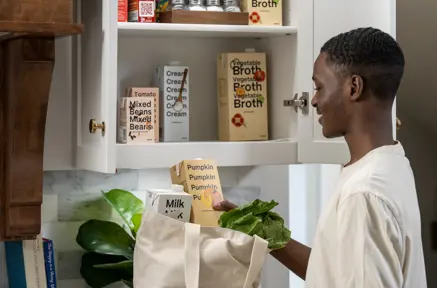Introduction: India’s booming dairy industry

Source: Production, Composition and Nutritional Properties of Organic Milk: A Critical Review
This growth, driven by increasing consumer demand, reflects the industry's shift toward offering diverse products, such as flavored milk and fortified dairy beverages. As consumption patterns change, the need for innovative packaging solutions grows to ensure product quality, reduce spoilage, and expand distribution networks. Aseptic packaging has emerged as a revolutionary technology, catering to the needs of both dairy producers and consumers.
The role of aseptic packaging in dairy innovation
Aseptic packaging has fundamentally changed the dairy industry, enabling products to remain fresh without preservatives or refrigeration. Through a combination of sterilization and the high-performance barrier functions of its packaging materials, aseptic technology maintains the freshness, quality, and nutritional integrity of dairy beverages over extended periods . Aseptic packaging, with its advanced barrier materials, preserves the freshness, taste, and nutritional quality of dairy beverages over extended periods without the need for refrigeration. This is particularly advantageous in India, where cold-chain infrastructure is limited in rural and semi-urban areas. Aseptic packaging enables producers to distribute dairy products over long distances while preserving their quality.
Moreover, aseptic packaging now supports a growing variety of dairy products, including flavored milk, yogurt drinks, and traditional ethnic beverages. These on-the-go products benefit from aseptic technology, allowing consumers to enjoy fresh, safe, and convenient dairy products without refrigeration.
Sustainability: The advantages of aseptic packaging
As sustainability becomes a global priority, the demand for such packaging in India has grown significantly. Aseptic cartons provide a sustainable alternative by using renewable materials and reducing reliance on fossil-based substrates. Designed for effective recyclability, these cartons contribute to a circular economy, helping to reduce waste and support sustainable packaging practices. Innovations in aseptic packaging, such as aluminum-layer-free carton solutions, further enhance environmental benefits by minimizing the materials' carbon footprint and making recycling more efficient.
Adapting to changing consumer preferences in India
India’s evolving consumer landscape is driven by a shift toward health and convenience. Ready-to-drink (RTD) dairy products, such as flavored milk, protein-enriched beverages, and probiotic yogurts, are becoming increasingly popular. Aseptic packaging plays a crucial role in catering to these preferences by ensuring product safety and nutritional integrity without the need for refrigeration.
With rising demand for premium and functional dairy products, aseptic technology enables producers to meet diverse consumer expectations. Whether targeting families, health enthusiasts, or busy professionals, the flexibility of aseptic packaging allows brands to offer dairy products in convenient sizes and formats, making them ideal for on-the-go consumption.
Addressing infrastructure challenges
One of the most significant challenges facing India’s dairy sector is the lack of adequate cold storage infrastructure, particularly in rural and remote areas. Aseptic packaging helps overcome these limitations by allowing dairy products to be distributed without the need for refrigeration. This not only reduces spoilage but also increases product availability across diverse geographies, making high-quality dairy products accessible to a broader consumer base.
By reducing dependence on energy-intensive cold storage, aseptic packaging supports a more sustainable and efficient supply chain. The ability to transport products over long distances without compromising quality supports India's goal of reducing food waste and enhancing food security.
Conclusion: Shaping the future of dairy with aseptic packaging
Combining sustainability, convenience, and safety, aseptic packaging is transforming India’s dairy industry. As the country continues to lead global milk production, embracing aseptic technology will be essential for maintaining competitiveness in a rapidly evolving market. By adopting aseptic packaging solutions, dairy producers can extend product shelf life, reduce environmental impact, and meet the growing demands of consumers who prioritize both quality and sustainability. This innovative approach is set to shape the future of India’s dairy industry, creating a more efficient and resilient supply chain for years to come.

Innovation and partnership to improve global food access

Transforming coffee culture in India: A sustainable packaging revolution

